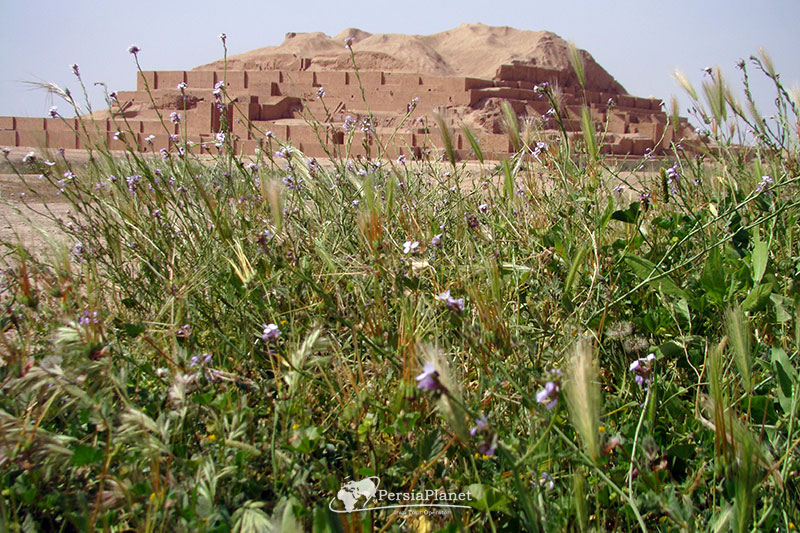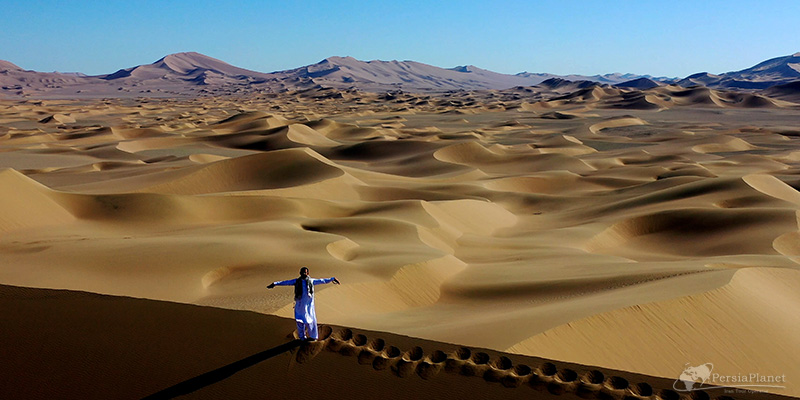Chogha Zanbil, Choghaznabil Ziggurat

Rood Afshan Cave, Roodafshan, Rodafshan, Rudafshan
August 9, 2021
Shushtar Historical Hydraulic System
August 12, 2021Choghaznabil Ziggurat is a famous ancient structure and one of the monuments from Iran in the UNESCO World Heritage List. Choghaznabil, which means “Dur Ontash” in the ancient Elamite language, is a collection from the time of the ancient Elamites, which is located in Khuzestan province, between Shushtar and Shousha (from east to west) and between Dezful and Ahvaz (from north to south). Choghaznabil is located 42 km east of the city of Susa and is part of the city of Susa.

What is the meaning of the word ziggurat and Choghaznabil?
The word ziggurat means mountain and peak or high place. The ancient name of Choghaznabil or Duravantash means the place and location of Ontash (its maker). But Choghaznabil itself in Lori language means a basket like a mountain.

History of Choghaznabil Ziggurat
Choghaznabil Ziggurat is part of the ancient collections of early civilizations during the Agricultural Revolution and Mesopotamian civilizations. The ancient city of Susa is located northwest of the ziggurat. This ziggurat, or pyramid-shaped temple, was built around 1250 BC by Elamite king Ontash Napirsha for an ancient deity named Inshushinak. The ziggurat, a quadrangular pyramid, was protected by walls and has now been rebuilt.
In the Choghaznabil complex, there are temples for other goddesses and it seems that other temples were to be built. But the later Elamite kings did not continue it. In the Choghaznabil complex there is also a collection of royal tombs related to the ancient Elamites. Choghaznabil was once a great religious and pilgrimage center. The Choghaznabil ziggurat was invaded by the Assyrians under Ashurbanipal in 640 BC.

The structure of Choghaznabil ziggurat
Choghaznabil Ziggurat is now about 25 meters high. But archaeological studies have shown that it was twice as tall and had five floors before it was destroyed by Ashurbanipal and gradually eroded. The ziggurat is a religious structure that you can see more in the Mesopotamia, like Iraq. But Choghaznabil ziggurat is a unique example in Iran.
Choghaznabil ziggurat is mostly made of raw clay and baked clay bricks. There are also handmade ornaments and drawings in Elamite and Akkadian lines on the body. Another important aspect of Choghaznabil is the tiling and glazing industry, the traces of which can still be seen in this ruined temple. Also, some studies show that the oldest water treatment plants in the ancient world have been created in this complex.
Roman Gershman, a French archaeologist who spent about 10 years researching in the Khuzestan region, also carried out several stages of excavation in Choghaznabil.

The story of Choghaznabil
The Elamite Empire ruled Iran before the Medes came to power. One of the famous kings of this empire, Ontash Gal, in 1250 BC ordered the construction of a religious and royal city called Dur Untash near the river Dez and the ancient city of Susa. This city and its temples were built to worship the two great gods and patrons of the Ilam Empire, namely Napirshah (the god of the city of Anshan) and In-Shushinak (patron of the city of Susa) and welcomed pilgrims in ritual ceremonies and there was permanent residence in it. In this city, three nested fences have been built, which have seven gates, and in the distance between the two fences, there are several palaces, buildings, temples and structures.

Brick writings and inscriptions of Choghaznabil
Choghaznabil brick inscriptions and inscriptions play an important role in introducing and recognizing this great and wonderful building of the ancient world. A collection of thousands of inscriptions, some of which have the Choghaznabil ziggurat as a belt and some of which are written on other works and objects. These inscriptions are in Elamite script and language. The inscriptions mention the reasons for making the ziggurat, the name of the manufacturer, the materials and the decorations. The translation of one of these inscriptions is as follows:
I Ontash Napirisha with golden bricks, silver, black agate stones, white stones and stones … I built this temple and presented it to the gods of Napirisha and Inushushinik from the holy neighborhood. Whoever destroys it and whoever destroys its bricks, whoever picks up his gold and silver, black agate stones, white stones and stones … and his bricks and takes them to another place, may the curse of the gods of the holy neighborhood be Do not let Parisha, Inshushink and Karirisha descend on him and may his descendants be dismantled under the sun.
About 6,500 of these bricks have been read so far, and the text of all of them bears the name of Ontash Gal, indicating that this city and temple were built by order of this king.

Where is Choghaznabil?
Choghaznabil is located in Khuzestan province and is one of the sights of Susa. This temple is located 45 km south of the city of Shousha and 35 km west of the ancient city of Shushtar near the ancient region of Haft Tappeh.
Choghaznabil access route: The Choghaznabil World Heritage Site is accessible via the Shush Road to Ahvaz. Also, by taking Shushtar road to Haft Tappeh or Karun agro-industrial road, you can reach Choghaznabil.
Address: Khuzestan province, 45 km south of Shush city

Things to know when visiting Choghazbil
Choghaznabil is a world heritage that belongs to everyone; Please observe the following points when visiting this area so that this valuable sight remains for the future.
- There is a toilet, a prayer hall and drinking water in this area.
Smoking and littering are prohibited throughout the area. - It is forbidden to enter the ziggurat area with heels and damaging shoes.
- During the rainy season and for at least 12 and at most 24 hours after that, visiting the site is prohibited to prevent damage to the brick floor and structures.
- Any professional photography and filming of the collection, either by land or by air, is possible only with the written permission of the General Directorate of Cultural Heritage of Khuzestan Province and the management of the Choghaznabil World Heritage Site.

Visiting time of Choghazbil
Visiting hours: the first six months of the year from 8:30 AM to 7:30 PM and the second half of the year from 8:30 AM to 5 PM
Holidays: Tasua and Ashura mourning days, the death of Hazrat Mohammad, Imam Reza, Hazrat Fatemeh and June 4 and 5
Religious holidays are based on the Arabic calendar and change every year according to the normal calendar.

The best time to visit Choghaznabil
Khuzestan is one of the tropical provinces of Iran and the best time to visit it is the second half of the year. From October to May, this province has a suitable climate and after that it is difficult to travel to it due to the hot weather.

Mehdi Gholami.











